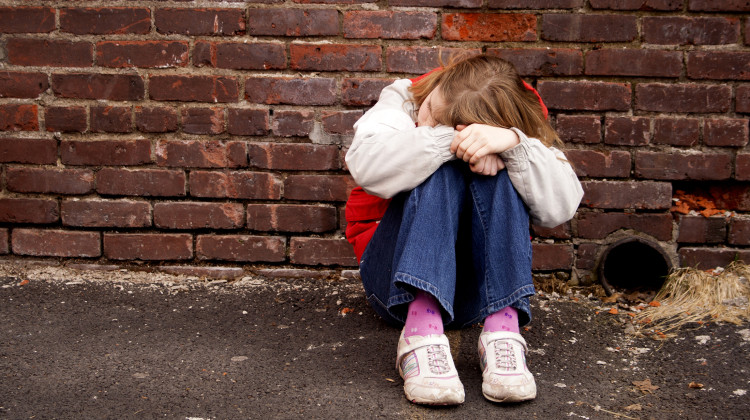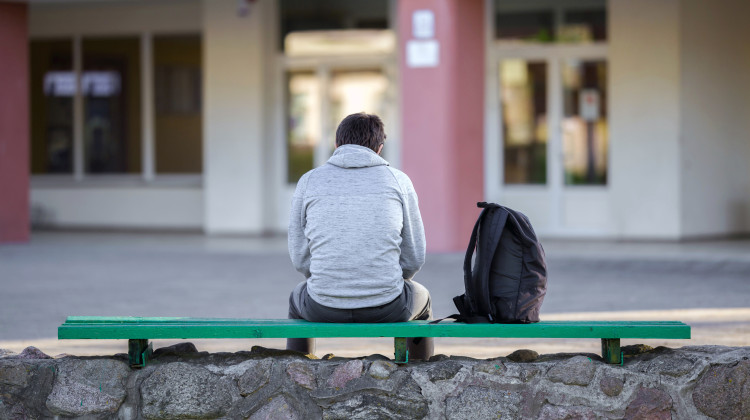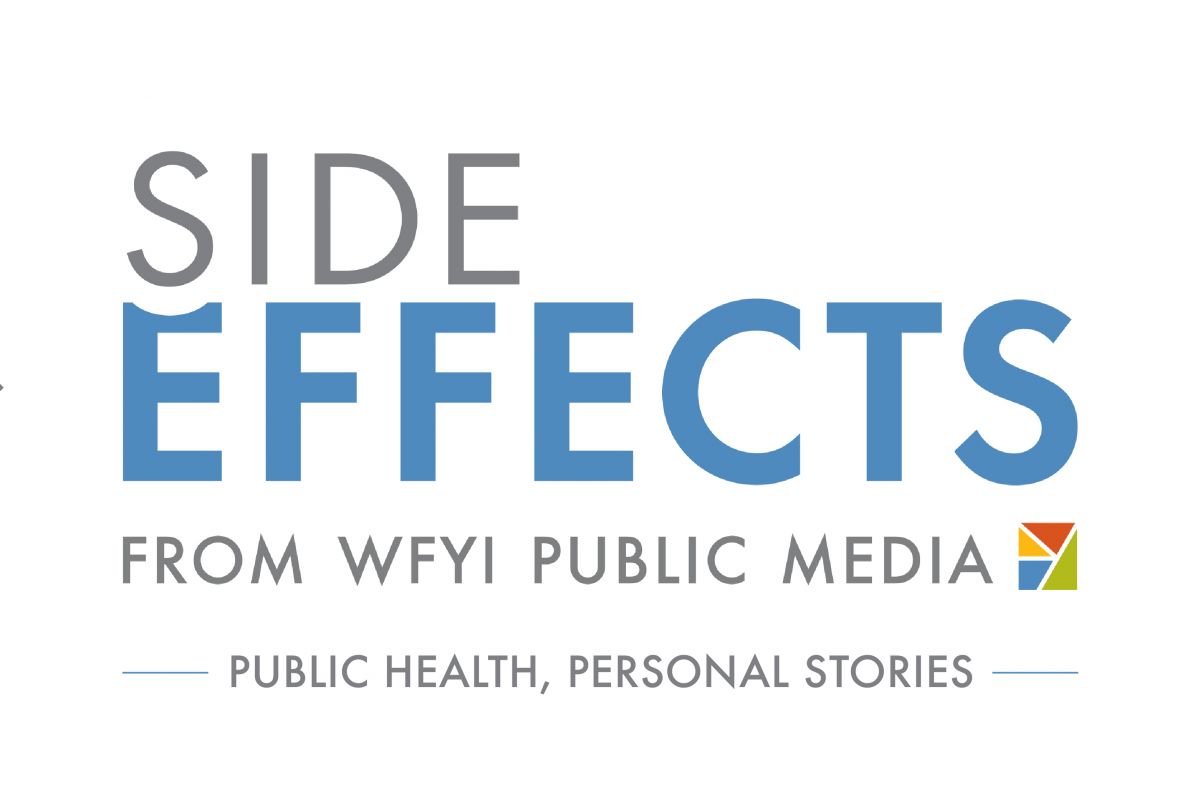
The girls at Madison Juvenile Correctional Facility have access to an online library and limited music.
Barbara Brosher/WFIU-WTIUA juvenile correctional facility in southeastern Indiana started an experiment two years ago. It distributed secure tablet computers to all of the girls.
The goal of the technology was to help improve the girls’ educational experiences and opportunities. But the tablets are having an impact beyond the classroom.
More Access To Educational Tools
It’s just before lunchtime at Promise Jr. and Sr. High School and one of the classrooms is unusually quiet. One student is reading The Color Purple on a tablet, another is working on grammar exercises.
It’s not unusual to see students working on tablets in the classroom, unless you go to a school like this. Promise Jr.-Sr. High School is at Madison Juvenile Correctional Facility. It’s one of four facilities like it in the state.
And what you see in these classrooms is unique. Kids don’t have access to the Internet while they’re here.
“That’s hard for us because so much content is digitally delivered,” says Susan Lockwood, director of juvenile education for the Indiana Department of Corrections. “So many textbook companies’ instructional materials are in digital format, or they come with supplemental materials that are digital format.”

Lockwood wanted the girls here to be on a level playing field with students in Indiana’s public schools. So she started a pilot program in 2014, giving each of the 45 girls a tablet from a startup called American Prison Data Systems.
“It uses a Verizon network that’s a secure network, but it’s a separate network that the typical Verizon user wouldn’t be using,” Lockwood says.
So the girls can’t just simply get online and search the Internet.
Teachers like Samantha Goldsmith drop instructional materials onto the tablet for them to access during or after class. For a recent lesson about the Great Depression, she shared photos, music and video.
“This one in particular about the triangle shirtwaist fire that was way more interesting letting them watch it and watch it be reenacted, way more interesting for the girls,” Goldsmith says while thumbing through a video on her tablet.
She says the tablets give her the ability to teach students in a way that caters to each of their individual learning styles. Instead of just giving them an article to read, she’ll also record herself reading the article for girls who are auditory learners.
And there’s evidence the tablets are helping them learn. The company that makes the technology did a study last year.
“They did a pre-tablet check of the reading scores of our girls and then they compared their pre-test reading and post-test reading of students who were here the whole time with tablets,” says Principal Barb Siegelin.
The girls’ reading scores went up after they received the tablets.
And that’s not the only change the staff has noticed.
Positive Behavior Changes Since Tablet Implementation
Teacher Laura Goodwin says the technology helps the girls avoid some of the daily drama that pops up.
“These tablets are really an excellent way of disconnecting for a moment, regrouping their thoughts just by listening to music,” Goodwin says.
The girls have access to a limited music and e-book library that they can use in their free time.
There’s also a program that allows them to directly message the adult staff at the facility, allowing for quicker responses and causing a drop in the number of grievances filed.
But there have been calls from people who are upset the girls at Madison Juvenile have access to tablets. Lockwood says some people believe that goes against the notion the girls should be punished.
“And I would flip it around to say why shouldn’t they have tablets? Because we need to get them on the right path. And we can’t get them on the right path if they don’t have the right tools. And these are tools that every other kid their age would be using inside a classroom,” Lockwood says.
Tablet Access Could Be Expanded
The IDOC says the tablet program at Madison Juvenile costs about $60,000.
It’s been so successful the state is considering expanding tablet access to all of the people in its adult and juvenile facilities — and not just for educational purposes.
“There is a growing trend of prisons across the country looking at how we utilize technology to do things more efficiently,” Lockwood says. “How can people who are incarcerated use the tablet maybe to order commissary?”
The IDOC put out a request for information earlier this summer asking for more information about tablet technology for its incarcerated populations.
It’s reviewing the submissions.
 DONATE
DONATE







 Support WFYI. We can't do it without you.
Support WFYI. We can't do it without you.